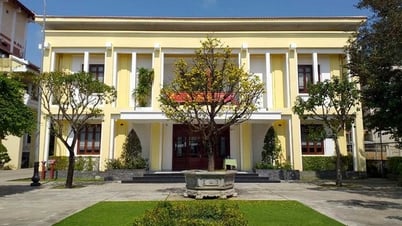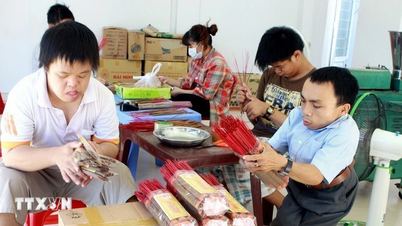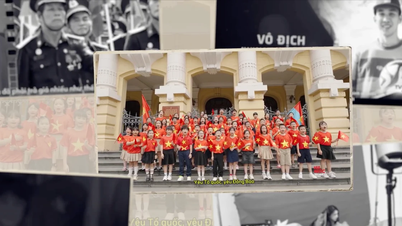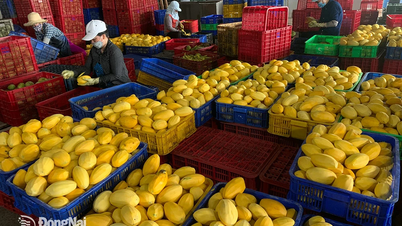The incident of Ho Van Phuong Tam buying tickets to visit and violating and destroying the National Treasure of the Nguyen Dynasty's Throne has caused public outrage in recent days, and once again sounded the alarm about the current management and protection of heritage at relic sites.
Community feedback on social networking sites, as well as instructions from cultural representatives, local leaders, relic management agencies, as well as opinions from experts and cultural researchers... most expressed outrage and sadness upon hearing the news of this serious incident.
Public opinion condemned the vandal, and also criticized the security guards for being negligent, allowing the subject to sneak into the main hall to commit the crime, and then being slow to control the subject when the incident occurred.
Many opinions also say that the Hue Monuments Conservation Center must take responsibility because the management and protection of national treasures is very lax...
The leaders of the Hue Monuments Conservation Center also admitted that this was a rare incident, the first time it had happened at the Center, so through this the unit also learned many lessons in the work of protecting relic sites.
This is not the first case of a national treasure being damaged or deformed by human impact and carelessness. Previously, a number of national treasures were damaged due to human impact.
One example is the incident in which the painting "Spring Garden of Central, South and North" by famous painter Nguyen Gia Tri, recognized as a national treasure in 2013, was severely damaged after being cleaned at the Ho Chi Minh City Museum of Fine Arts in mid-2019.
The cause of the damage was that the museum assigned the task of cleaning the work to someone with no experience in heritage conservation. This person used dishwashing liquid, scouring powder, and even sandpaper to clean the painting.
The Department of Fine Arts, Photography and Exhibition has conducted an assessment and confirmed that the National Treasure - the painting "Spring Garden of Central, South and North" has been severely damaged, about 30% and it is difficult to restore it to its original state.
Because in addition to the physical damage, the important element in lacquer paintings, the soul, spirit and atmosphere in the painting, has been damaged quite a lot. This is the part that cannot be recovered.
More recently, in October 2024, the fire at Pho Quang Pagoda (Xuan Lung Commune, Lam Thao District, Phu Tho Province) caused serious damage to the National Treasure Stone Buddha Altar (also known as Lotus Stone Pedestal, recognized in 2021).
The fire left the entire surface of the altar covered in black smoke; the lotus platform had two broken corners on the left (both upper and lower petals), and a large crack on the right; the body and base of the altar were chipped and split in some places; some areas were also chemically altered.
Regarding previous cases of damage to national treasures, many questions are raised: Has the management and protection of heritage, especially national treasures, really met the requirements in the management and protection of heritage and artifacts?
If it is put on display for the community to visit and admire, what protection measures are needed to prevent the heritage from being damaged, especially for artifacts associated with the community, belonging to religious rituals...
The current Law on Cultural Heritage and Clause 2, Article 9 of the 2024 Law on Cultural Heritage strictly prohibit "violating and destroying cultural heritage." The Penal Code also stipulates in line with the Law on Cultural Heritage on acts of destroying property belonging to historical-cultural relics, scenic spots, and scenic spots, at various levels of consequences.
Regarding sanctions, the legal system has regulations for handling violations depending on the level, from administrative sanctions, fines, non-custodial reform to imprisonment.
The Nguyen Dynasty Throne case will continue to be investigated by the authorities. Those involved will have to clarify their responsibilities and take disciplinary measures in accordance with the law.
Some researchers and cultural managers believe that the Law has provisions, but risks still occur from both objective and subjective perspectives. Once again, heritage conservation work requires a full assessment to come up with appropriate sanctions and measures to protect and preserve national treasures for future generations.
With the Government directing a general review and assessment of the work of displaying, preserving, protecting and ensuring the security and safety of national treasures nationwide in the coming time, management units need to promptly strengthen measures to ensure absolute safety of recognized national treasures and valuable artifacts and antiques at relics and scenic spots in accordance with the provisions of law.
Heritage promotion must always be accompanied by the purpose of heritage protection. Therefore, displaying, exploiting, opening to the public... are necessary but must always be accompanied by protection plans in all subjective or objective situations such as fire, theft, vandalism...
In the near future, the revised Law on Cultural Heritage 2024, effective from July 1, 2025, will officially come into effect. It is hoped that the "gaps" in the management and protection of relics will be "filled", the heritages will be protected and unfortunate incidents like the above will no longer occur./.
(Vietnam+)
Source: https://www.vietnamplus.vn/nhung-di-tich-bao-vat-quoc-gia-bi-xam-hai-ai-se-chiu-trach-nhiem-chinh-post1040973.vnp


![[Photo] 12th grade students say goodbye at the closing ceremony, preparing to embark on a new journey](https://vphoto.vietnam.vn/thumb/1200x675/vietnam/resource/IMAGE/2025/5/28/42ac3d300d214e7b8db4a03feeed3f6a)
![[Photo] Prime Minister Pham Minh Chinh receives a bipartisan delegation of US House of Representatives](https://vphoto.vietnam.vn/thumb/1200x675/vietnam/resource/IMAGE/2025/5/28/468e61546b664d3f98dc75f6a3c2c880)
![[Photo] Vietnamese and Hungarian leaders attend the opening of the exhibition by photographer Bozoky Dezso](https://vphoto.vietnam.vn/thumb/1200x675/vietnam/resource/IMAGE/2025/5/28/b478be84f13042aebc74e077c4756e4b)

![[Photo] General Secretary To Lam works with the Central Policy and Strategy Committee](https://vphoto.vietnam.vn/thumb/1200x675/vietnam/resource/IMAGE/2025/5/28/7b31a656d8a148d4b7e7ca66463a6894)




















































































Comment (0)